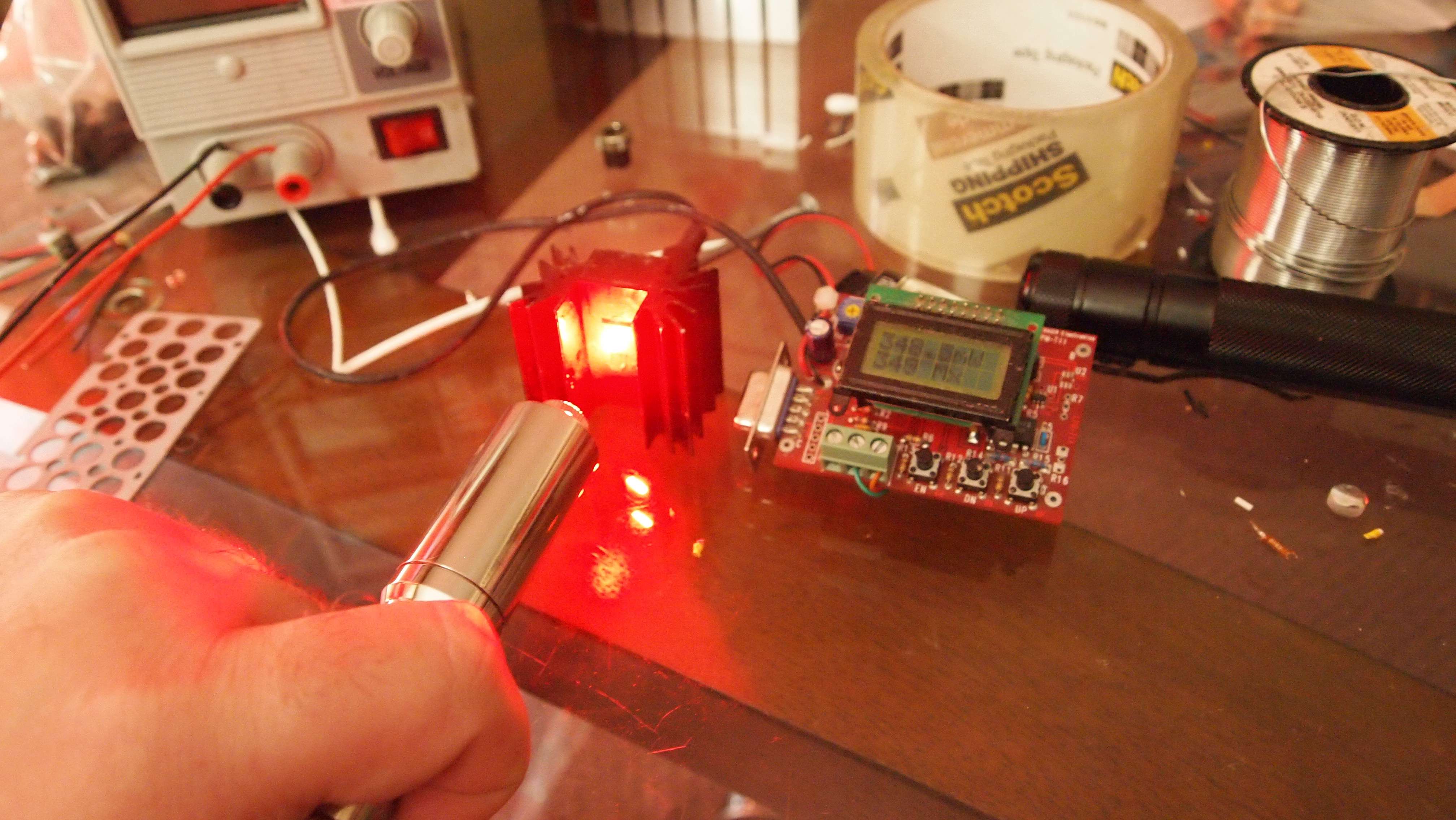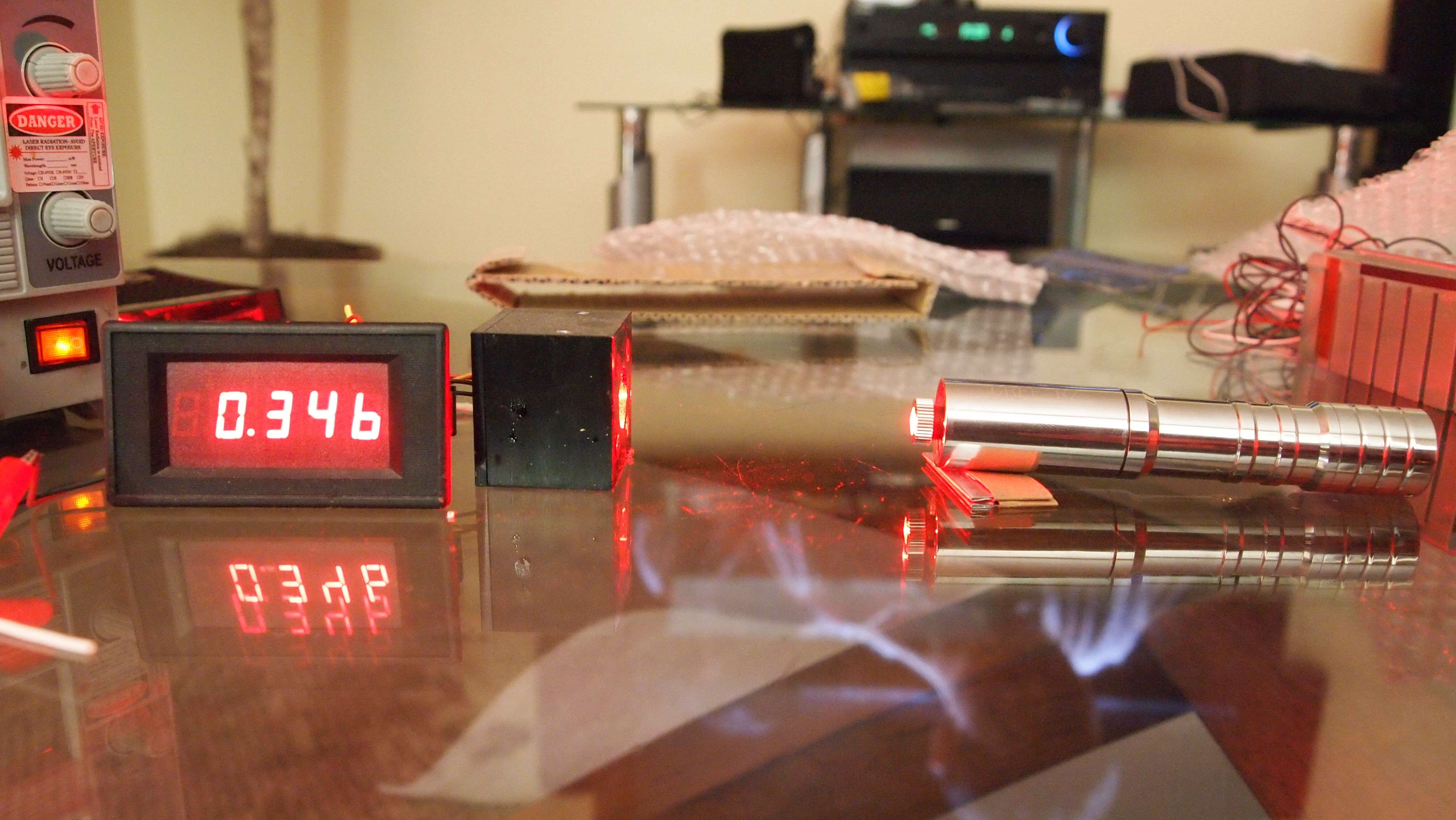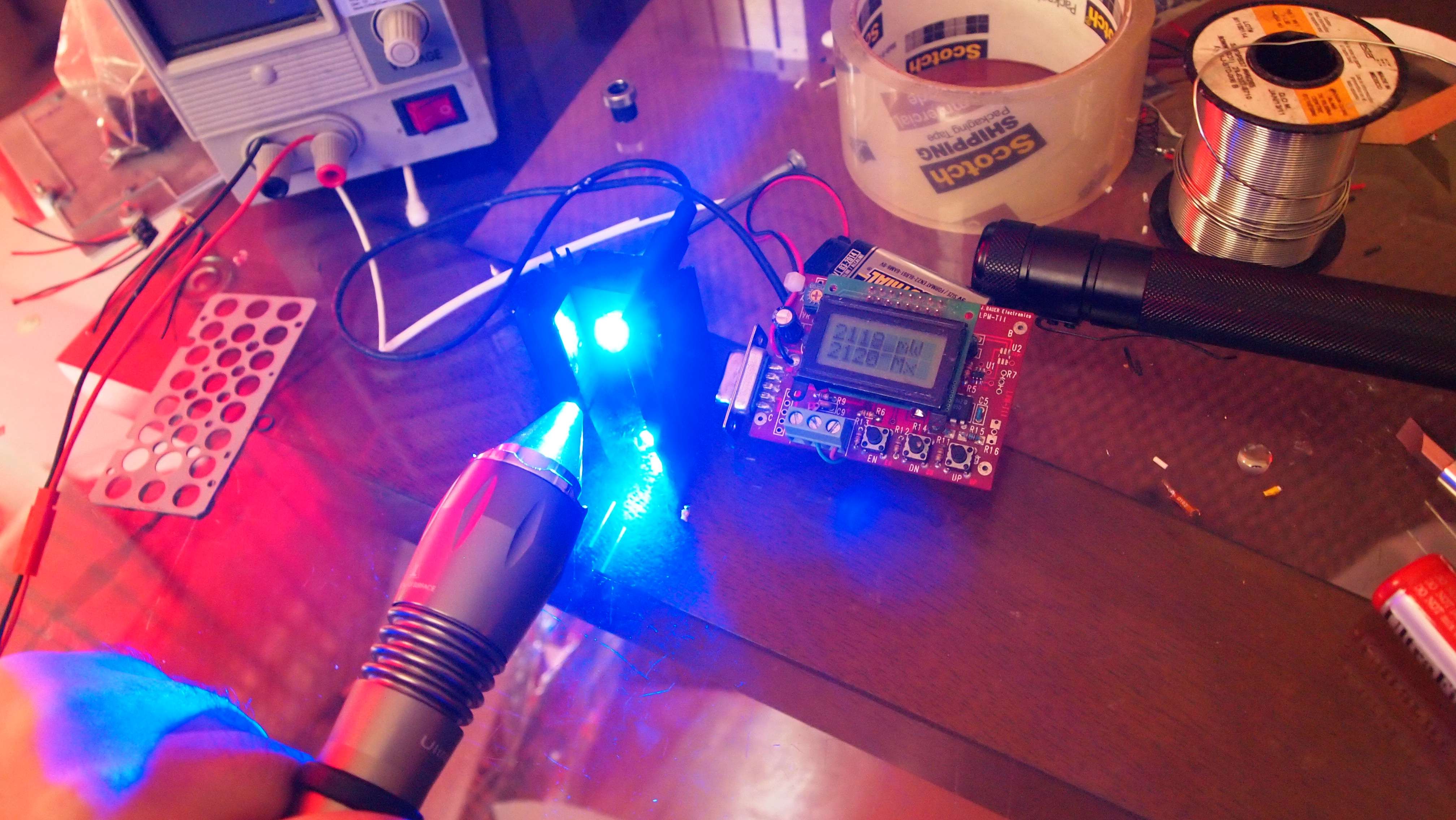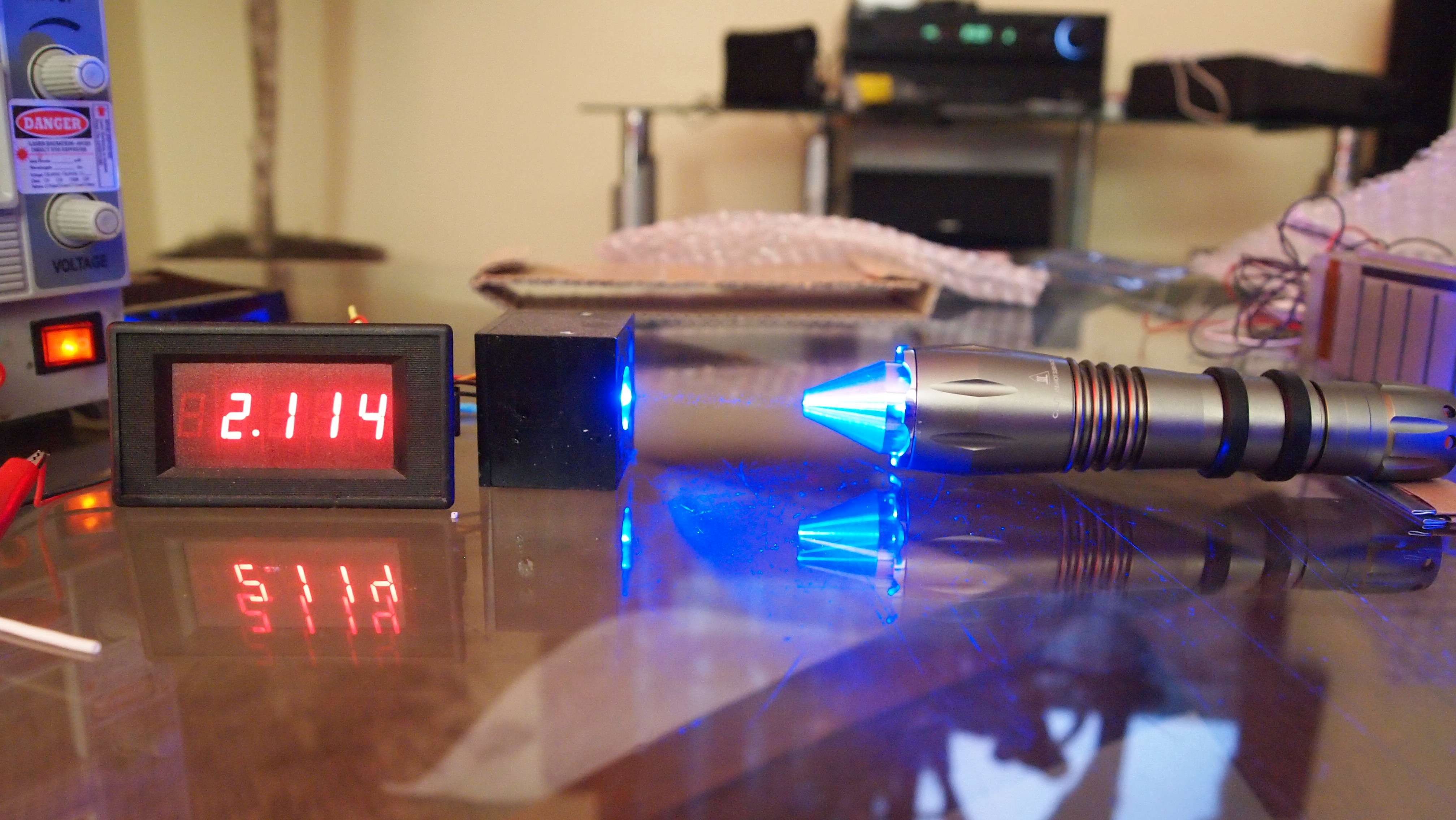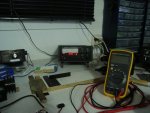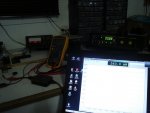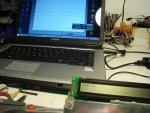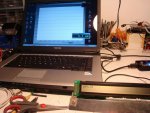Trevor
0
- Joined
- Jul 17, 2009
- Messages
- 4,386
- Points
- 113
Here's an abbreviated version of what's going on. I'm still quite scattered from the events of last week, so bear with me and I'll get to your questions as I can. Please don't hesitate to call me... this way you're guaranteed to get a reply. My number is <redacted>. I'm on the east coast, so just call at a reasonable hour. If I don't pick up, leave me a message and I'll get right back to you.
I've been working on a research project here at Virginia Tech - I met with a Coherent representative earlier this semester. They donated a 641nm 100mW-rated CUBE laser to me. It is brand new, perfectly calibrated, and is computer controllable.
A few weeks ago a user came to me when he was experiencing vastly different readings on his Kenomter USB vs. his Laserbee 2.5W - lasers were reading around 15% higher on the Kenometer USB. I sent him the Kenometer USB firmware update and gave him a new version of Luminosity. The issue persisted.
For the sake of science, I decided to test my four Ophir sensors. I set my CUBE to output 80mW. The results were as follows:
I was rather dismayed. This opened up the possibility of the LaserBee 2.5W LPM's to be incorrect. If we thought the Ophir sensors were reading high but they are actually reading low, then it means the LaserBees are probably reading very low.
This was rather distressing. Jerry calibrates his LPM's against a Newport LPM. They should be accurate and we assume them to be accurate. I went back and found a graph on PL that showed them to be accurate. If they are not accurate, it could mean that a lot of our benchmarks and fundamental assumptions regarding laser diodes (output in millwatts being less than input in milliamps, efficiency, etc).
However, I had not tested the user's Ophir sensor. So he shipped it to me. I once again set my CUBE to output 80mW. I fired up my Apex LPM with his Ophir sensor attached. It read 3.5mW with no power input. I moved the laser over to the sensor surface, expecting to see a high reading.
83.5mW. 3.5mW + 80mW = 83.5mW. That was NOT supposed to happen. This is BAD.
I shipped the Ophir sensor back to the user, intending to test his LaserBee next.
Last Thursday (after I'd been covering the shooting for the student paper), I got a call from him. He'd gone to test some of his lasers at a nearby university and had gotten numbers that were effectively the same as the LaserBee's.
This points to some pot in his sensor being weird. Perhaps it misreads only at high power.
And that is where we stand today.
I suspect that there is just something screwy with his sensor that throws it off at high powers. I certainly hope that is the case.
Any assistance in collecting more data would be greatly appreciated. Any insight as to what's going on with the rogue sensor would also be appreciated.
I have a high power 445nm laser here that I can use to do a differential test with, but I have not used it yet due to not having a perfect read on exactly what it's putting out.
So there you have it. My findings presented for your objective consideration.
Gentleman, what do you make of it?
Jerry: I did not want to take this into the public eye unless absolutely necessary. I still have not collected enough data to come to a conclusion. Only because it has been brought up do I post my limited findings. My apologies. I've gone about this completely objectively and hope to get it sorted out as soon as possible for the sake of the community.
Trevor
I've been working on a research project here at Virginia Tech - I met with a Coherent representative earlier this semester. They donated a 641nm 100mW-rated CUBE laser to me. It is brand new, perfectly calibrated, and is computer controllable.
A few weeks ago a user came to me when he was experiencing vastly different readings on his Kenomter USB vs. his Laserbee 2.5W - lasers were reading around 15% higher on the Kenometer USB. I sent him the Kenometer USB firmware update and gave him a new version of Luminosity. The issue persisted.
For the sake of science, I decided to test my four Ophir sensors. I set my CUBE to output 80mW. The results were as follows:
- 10.7% LOW
- 5.4% LOW
- 4.1% LOW
- 8.3% LOW
I was rather dismayed. This opened up the possibility of the LaserBee 2.5W LPM's to be incorrect. If we thought the Ophir sensors were reading high but they are actually reading low, then it means the LaserBees are probably reading very low.
This was rather distressing. Jerry calibrates his LPM's against a Newport LPM. They should be accurate and we assume them to be accurate. I went back and found a graph on PL that showed them to be accurate. If they are not accurate, it could mean that a lot of our benchmarks and fundamental assumptions regarding laser diodes (output in millwatts being less than input in milliamps, efficiency, etc).
However, I had not tested the user's Ophir sensor. So he shipped it to me. I once again set my CUBE to output 80mW. I fired up my Apex LPM with his Ophir sensor attached. It read 3.5mW with no power input. I moved the laser over to the sensor surface, expecting to see a high reading.
83.5mW. 3.5mW + 80mW = 83.5mW. That was NOT supposed to happen. This is BAD.
I shipped the Ophir sensor back to the user, intending to test his LaserBee next.
Last Thursday (after I'd been covering the shooting for the student paper), I got a call from him. He'd gone to test some of his lasers at a nearby university and had gotten numbers that were effectively the same as the LaserBee's.
This points to some pot in his sensor being weird. Perhaps it misreads only at high power.
And that is where we stand today.
I suspect that there is just something screwy with his sensor that throws it off at high powers. I certainly hope that is the case.
Any assistance in collecting more data would be greatly appreciated. Any insight as to what's going on with the rogue sensor would also be appreciated.
I have a high power 445nm laser here that I can use to do a differential test with, but I have not used it yet due to not having a perfect read on exactly what it's putting out.
So there you have it. My findings presented for your objective consideration.
Gentleman, what do you make of it?
Jerry: I did not want to take this into the public eye unless absolutely necessary. I still have not collected enough data to come to a conclusion. Only because it has been brought up do I post my limited findings. My apologies. I've gone about this completely objectively and hope to get it sorted out as soon as possible for the sake of the community.
Trevor
Last edited:





